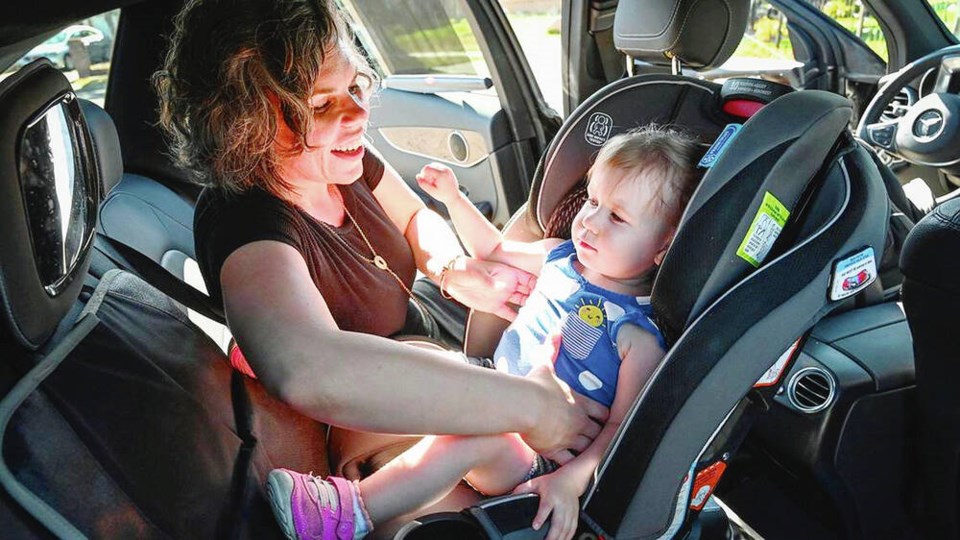There’s no doubt inflation is hitting us hard at the moment. Even a short year ago my hair was on fire for having to shell out $1.39 for a litre. Today, that seems like a super deal.
Cost cutting and bargain hunting are the order of the day now. But there’s one area where we should be extra cautious when trying to save a buck — buying a child car seat for the most precious cargo we will ever carry.
Based on a quick scan on the web, you’re looking at around $60 to $400 for a good brand name car seat — depending on the type you need.
But before you go looking for a better “used” deal there are some things to consider.
First, how old is the car seat? If you can’t verify the age of the seat you’re looking at then buying it probably isn’t a good idea.
With quality brand named products, the manufacturer info should be on the bottom or the back of the seat. This should include an expiry date. Being able to check a brand name and model number is important for product recalls that might have been issued.
Canadian regulations do not require the display of an expiry date, but any car seat with good quality standards uses them. A seat that has no label of any sort on it should be a red flag.
A car seat approved for use in sa╣·╝╩┤½├Į will bear our Transport sa╣·╝╩┤½├Į national safety mark — a circle with a maple leaf and other information inside it.
Second, does the used car seat have all of the equipment and attachments it was manufactured with, including the owner’s manual? Many car seats require belt extensions or brackets to hold the seat, and its occupant, in place during a crash. Those extra parts might be essential to your make and model of vehicle.
Third, be careful about trying to save a few bucks by heading across the border and picking up a car seat at a U.S. Costco or Walmart.
sa╣·╝╩┤½├Į has strict rules around the importation of child car seats. No kidding. If you want to check out all 601 sections of the pithily named Motor Vehicle Restraint System and Booster Seats Safety Regulations, I’ll send you the link.
Basically, it’s illegal to import a car seat that doesn’t meet our standards. And if you’re of a mind to sell that imported seat later on, know that you can’t legally advertise, sell or even give away a car seat that does not comply with Canadian standards.
Fourth, with a used car seat you may be unable to verify any crash history. I wouldn’t think anyone of conscience would sell a child seat that survived a crash, but you never know.
This is important because each manufacturer supplies directions to the consumer about the viability of its product after it’s been involved in a crash. Many times they will recommend disposal of the product and outright replacement.
Lastly, examine wear and tear carefully. Even if the cloth components look pretty good, plastics that are exposed for long periods to heat and direct sunlight can degrade significantly and become unsafe.
None of this means that finding a good used car seat is impossible. Relatives or trusted friends may have that good deal you need.
But it goes without saying that some extra diligence and care on your part is essential when you’re buckling in that most precious, “… Are we there yet?,” cargo in the seats behind you.
Glove Box: I was saddened after reading an obit on the weekend about the death of local transit bus driver Buddy Simms. He was a fixture on the Esquimalt, Colville and Munro routes forever when I was kid.
Friendly, funny and professional are the words that come to me as I reflect on him driving his passengers from town out to Esquimalt time and time again.
He also always had a wave for me, as he passed by on the night shift, when I was walking the dog around the neighbourhood.
Back then, Buddy’s driving skills seemed beyond superlative to a kid without a licence. He wheeled those 40 foot GM Diesel Division buses like they were extensions of his own arms through traffic which, at least to me, seemed sometimes impossible to navigate.
Thank you sir for getting so many of us home safely through all those years. Rest in peace, Buddy.



